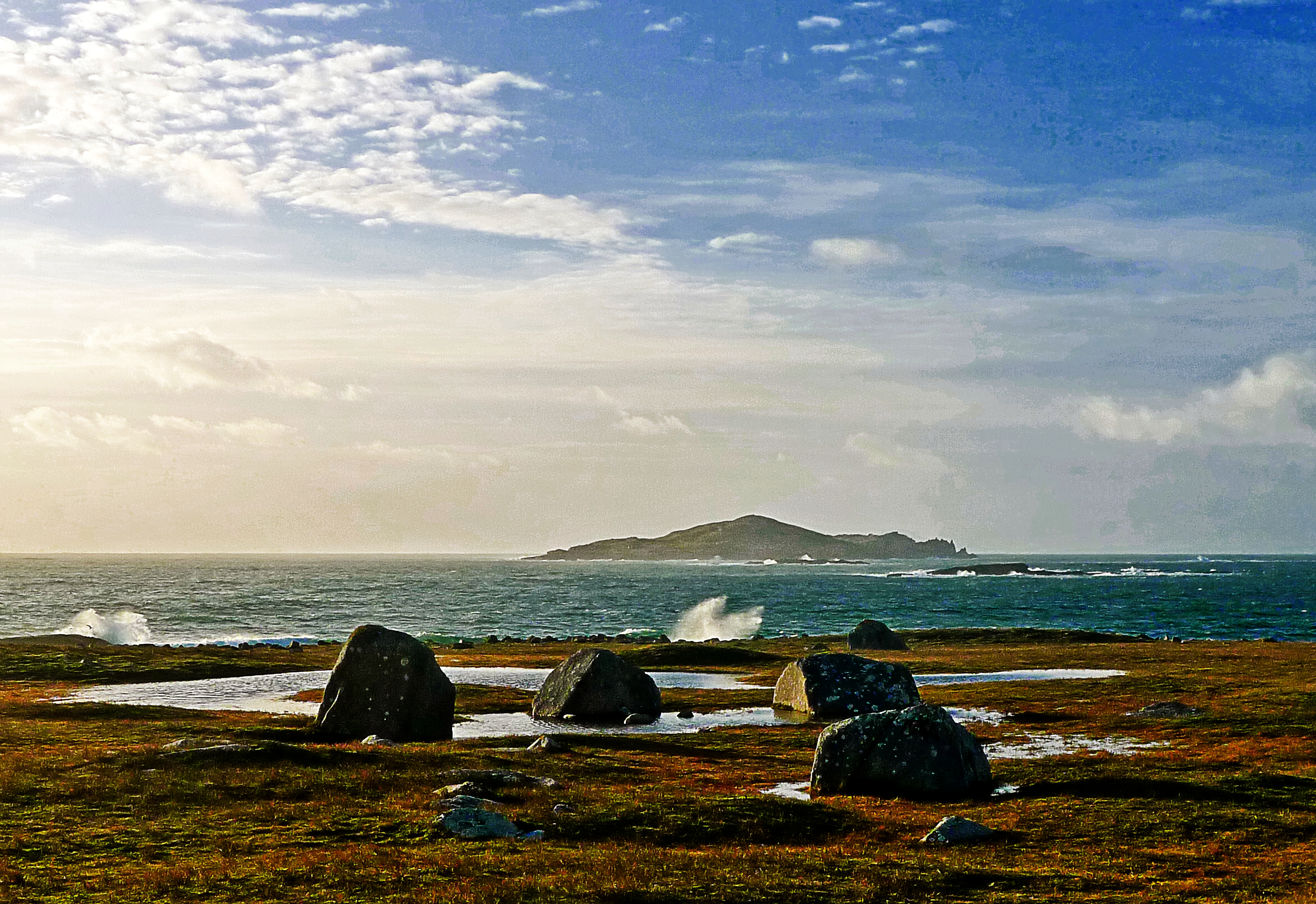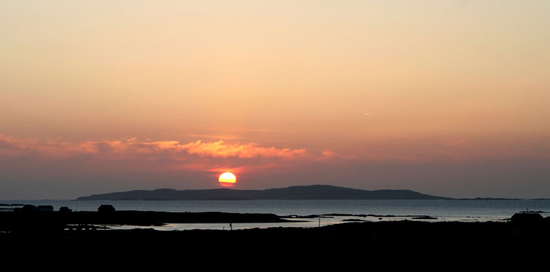
ISLANDS OFFSHORE AUGHRUS PENINSULA
As all visitors to the Aughrus Peninsula know well, there are several offshore islands visible from the mainland (apart from Inishbofin, Inishturk and Clare Island, further north):
- Inishark, uninhabited since 1960
- The privately owned High Island with its monastic remains and remains of much later mining activity 
- Cruagh and Friar Islands (to the right is Cruagh Island, seen from Omey)
- The more southerly islands of Inishturbot and Inishturk South, each inhabited by at least some families.
Below we give a brief tour of High Island and Inishark.
HIGH ISLAND:
Although people do visit High Island, it is in fact privately owned. Some years ago, on what was maybe the warmest and sunniest of days here in many years, we were treated to a guided tour of the island and the remains, by Feicin and Michael Mulkerrin.
There’s no pier or landing place that’s accessible in anything other than settled weather, and even with a light wind you can encounter a scend that makes landing difficult. Not only is the landing treacherous; there are dangers on the island too, such as disused mine-shafts, which is one good reason why unaccompanied visitors to the island are not encouraged.
The monastic settlement on High Island is said to have to been founded by St Feichin, in the 7th century. It’s speculated that the High Island settlement was the more penitential element of the Omey Island monastic settlement.
In much more recent times the island was for a time mined for its copper ore, before sea water flooded the mines and made further work impossible.
There's far too much to write about or describe here but you can find a number of books describing High Island in detail.
Here's a selection of photos from our visit.
INISHARK
 The beautiful island of Inishark lies just to the south of Inishbofin.
The beautiful island of Inishark lies just to the south of Inishbofin.
Uninhabited
since 1960, it once was home to a thriving community. But the lack of
electricity and especially the lack of a protected pier meant that
islanders lived a hard life, and ran the constant risk of being cut off
from the mainland for weeks or months on end. The death of an islander in 1960, from acute appendicitis which couldn't
be treated in hospital because the island was cut off by constant
storms at the time, was the last straw: the remaining islanders left,
together with their livestock and domestic animals. Inishark was abandoned.
Well, not altogether, by any means. The island has been used as a summer base since then by local fishermen. Sheep from the mainland are grazed during the summer months, on the rich pastureland of Inishark. The Inishark families and their descendants still fondly remember their old island home. Anniversaries are celebrated with masses held on the island.
Here are some photos of the main habitation on Shark:



 The beautiful island of Inishark lies just to the south of Inishbofin.
The beautiful island of Inishark lies just to the south of Inishbofin.